Abstract
Infection of a human lymphoblastoid cell line (Jijoye line derived from a Burkitt lymphoma which contains Epstein-Barr virus) with equine herpesvirus 1, maintained and observed for 53 days, was characterized by the continuous production of infectious extracellular and intracellular virus. Maximum virus production correlated with active cell multiplication. Less than 15% of the cells possessed viral capsid antigen at any one time. Five percent of the cells in the Jijoye line possess Epstein-Barr viral capsid antigen; 80% of the Epstein-Barr viral caspid-containing cells also contained equine herpesvirus 1 antigen as detected by double staining. The interaction of equine herpesvirus 1 and lymphoblastoid cells provides a useful in vitro model which may help clarify the mechanism for herpesvirus latency.
Full text
PDF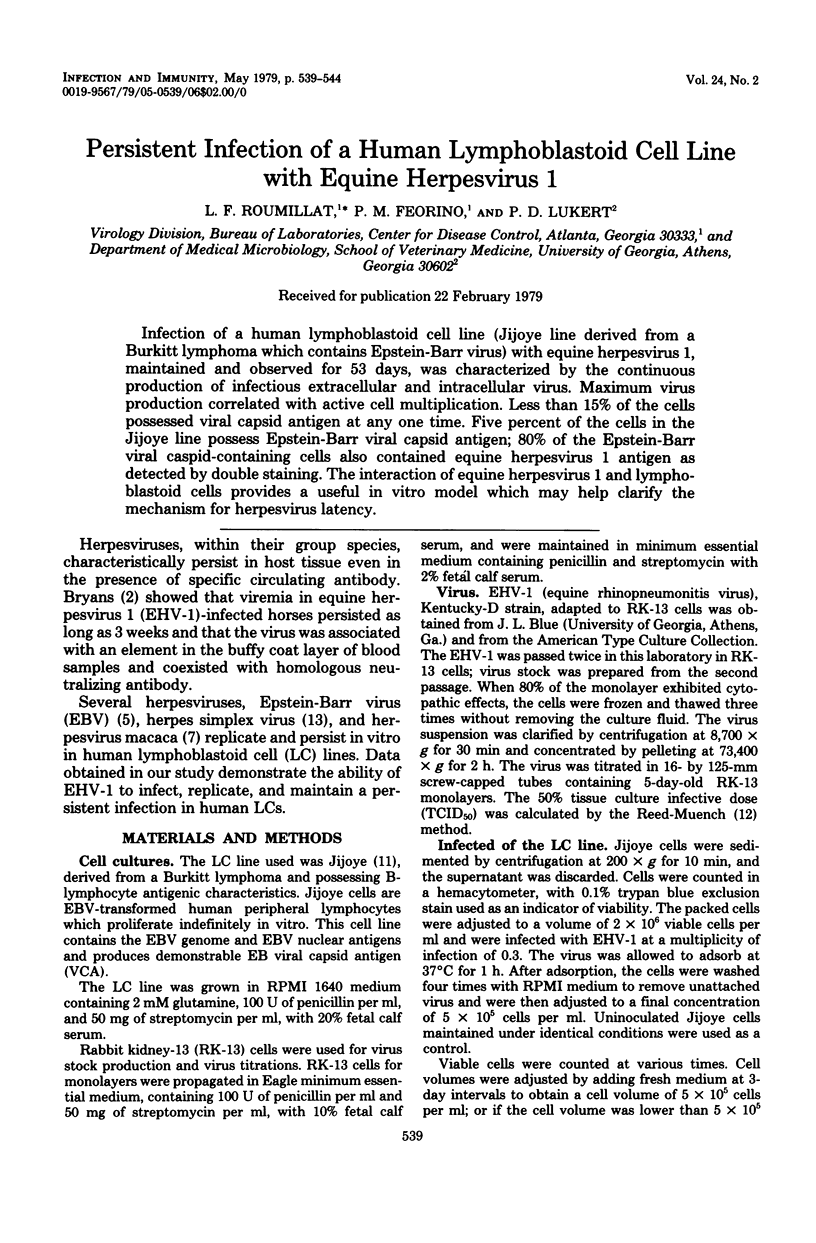
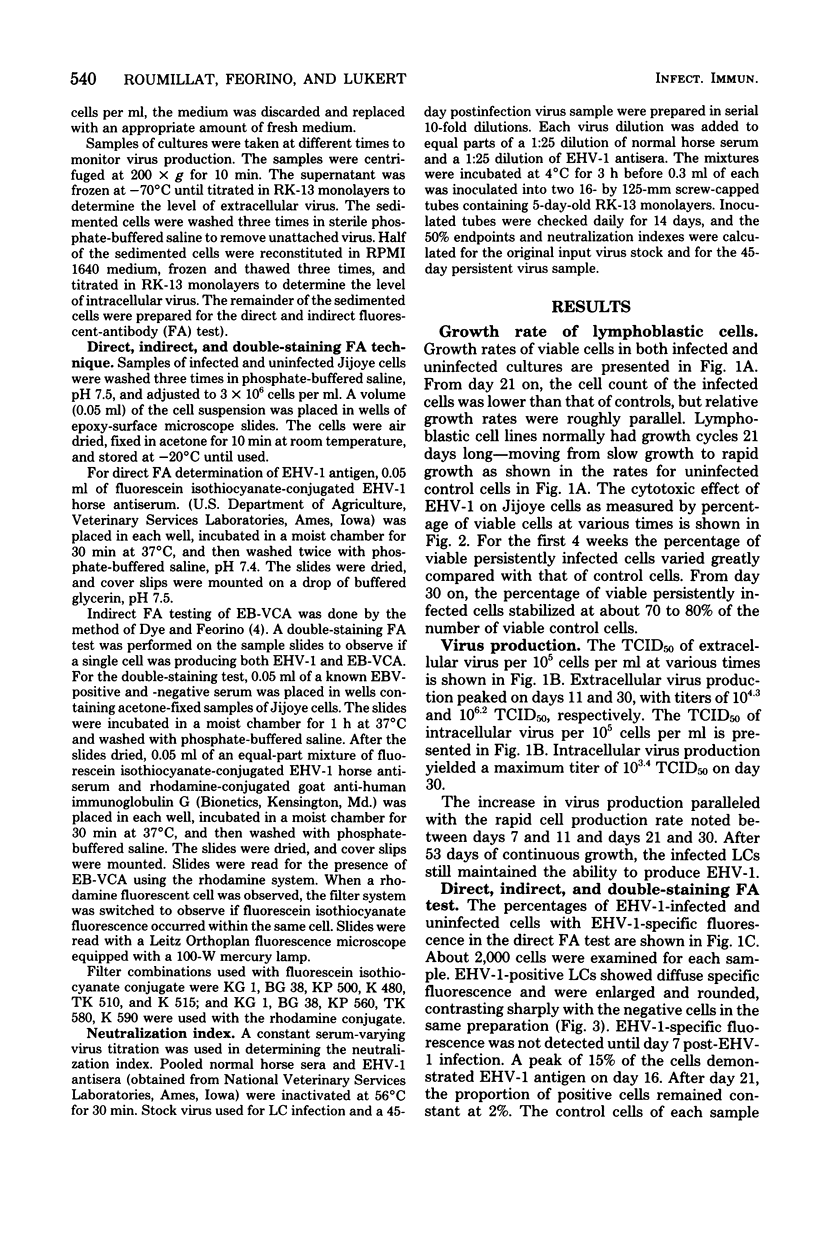
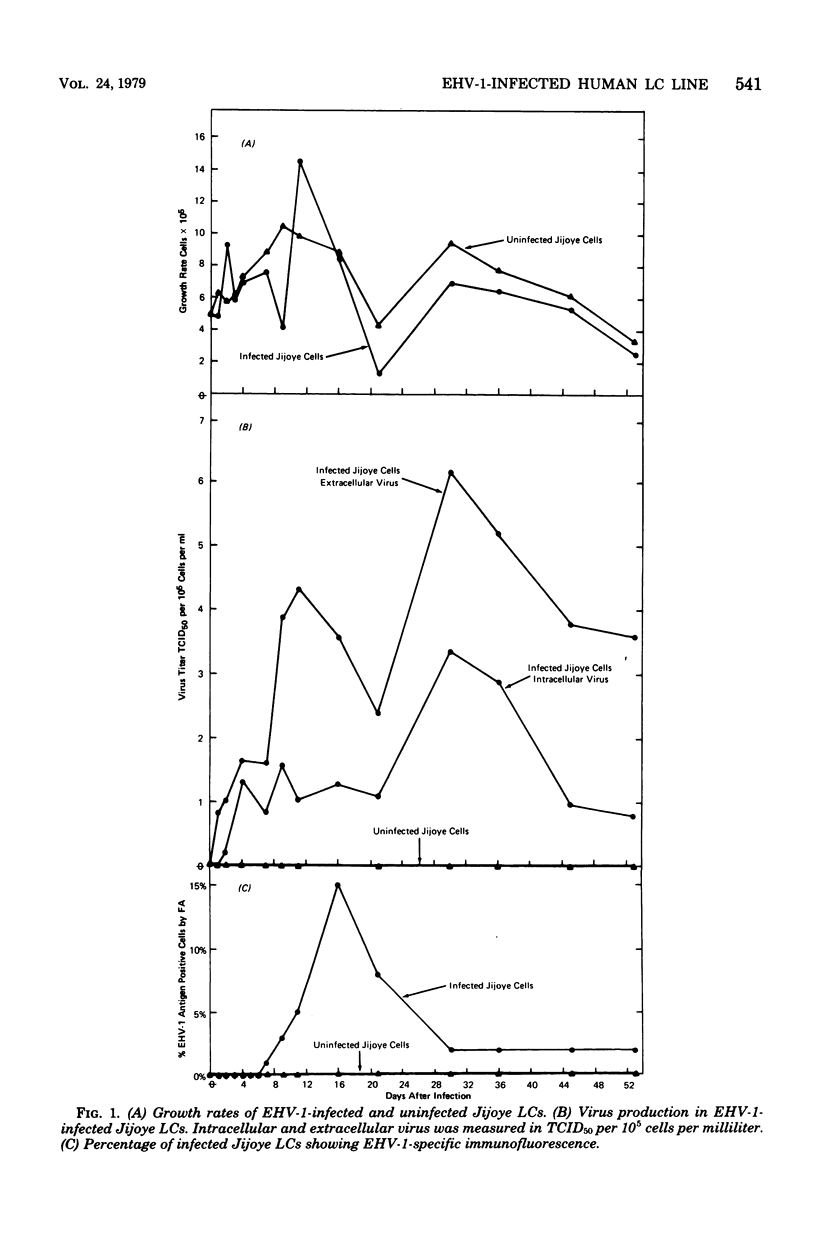

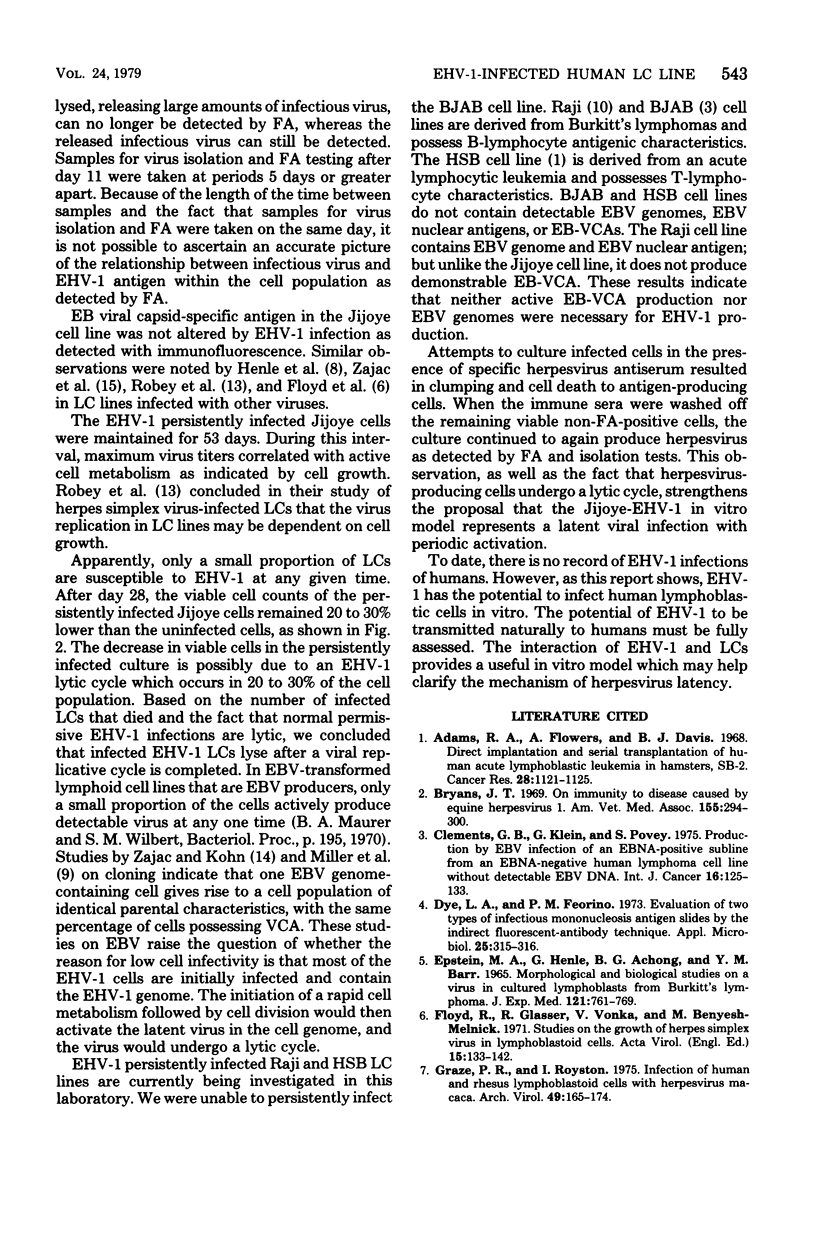
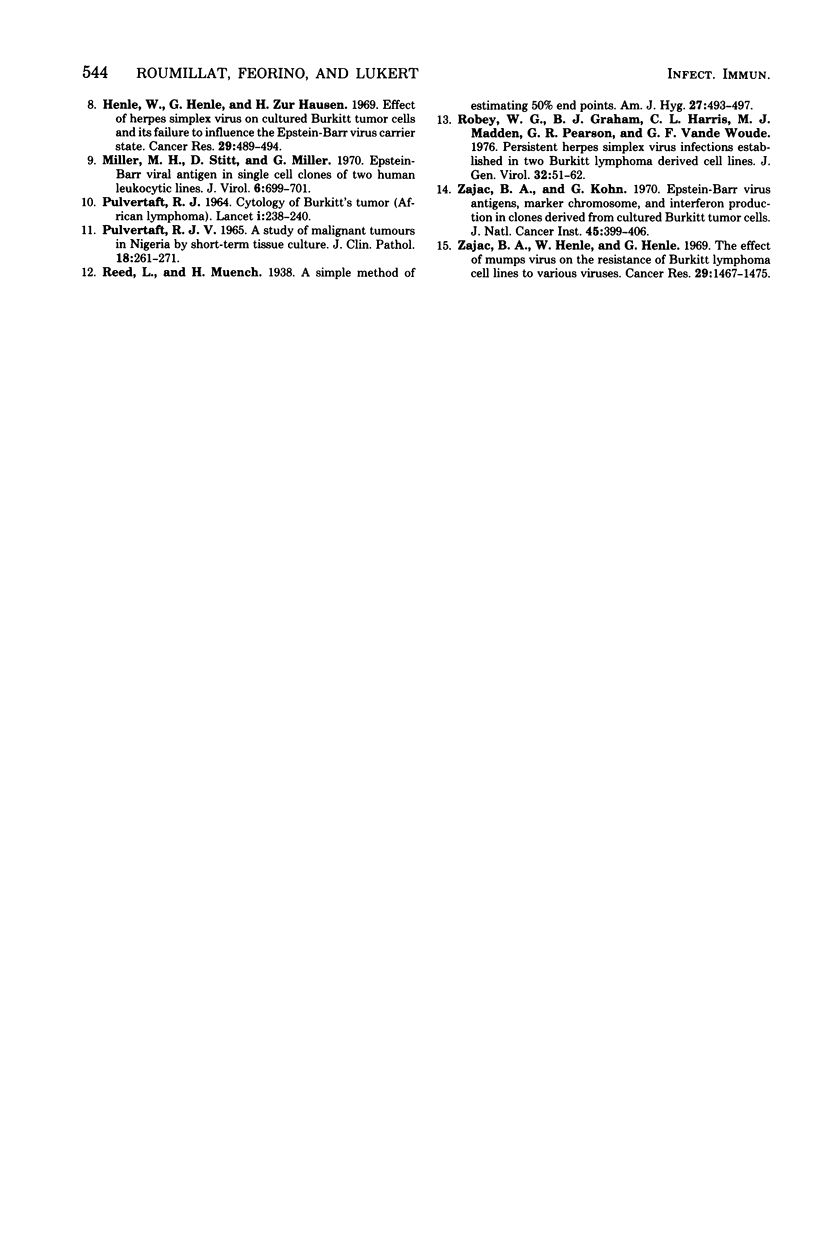
Images in this article
Selected References
These references are in PubMed. This may not be the complete list of references from this article.
- Adams R. A., Flowers A., Davis B. J. Direct implantation and serial transplantation of human acute lymphoblastic leukemia in hamsters, SB-2. Cancer Res. 1968 Jun;28(6):1121–1125. [PubMed] [Google Scholar]
- Bryans J. T. On immunity to disease caused by equine herpesvirus 1. J Am Vet Med Assoc. 1969 Jul 15;155(2):294–300. [PubMed] [Google Scholar]
- Clements G. B., Klein G., Povey S. Production by EBV infection of an EBNA-positive subline from an EBNA-negative human lymphoma cell line without detectable EBV DNA. Int J Cancer. 1975 Jul 15;16(1):125–133. doi: 10.1002/ijc.2910160114. [DOI] [PubMed] [Google Scholar]
- Dye L. A., Feorino P. M. Evaluation of two types of infectious mononucleosis antigen slides by the indirect fluorescent-antibody technique. Appl Microbiol. 1973 Feb;25(2):315–316. doi: 10.1128/am.25.2.315-316.1973. [DOI] [PMC free article] [PubMed] [Google Scholar]
- EPSTEIN M. A., HENLE G., ACHONG B. G., BARR Y. M. MORPHOLOGICAL AND BIOLOGICAL STUDIES ON A VIRUS IN CULTURED LYMPHOBLASTS FROM BURKITT'S LYMPHOMA. J Exp Med. 1965 May 1;121:761–770. doi: 10.1084/jem.121.5.761. [DOI] [PMC free article] [PubMed] [Google Scholar]
- Floyd R., Glasser R., Vonka V., Benyesh-Melnick M. Studies on the growth of herpes simplex virus in lymphoblastoid cells. Acta Virol. 1971 Mar;15(2):133–142. [PubMed] [Google Scholar]
- Graze P. R., Royston I. Infection of human and rhesus lymphoblastoid cells with Herpesvirus macaca. Arch Virol. 1975;49(2-3):165–174. doi: 10.1007/BF01317535. [DOI] [PubMed] [Google Scholar]
- Henle W., Henle G., zur Hausen H. Effect of herpes simplex virus on cultured Burkitt tumor cells and its failure to influence the Epstein-Barr virus carrier state. Cancer Res. 1969 Feb;29(2):489–494. [PubMed] [Google Scholar]
- Miller M. H., Stitt D., Miller G. Epstein-Barr viral antigen in single cell clones of two human leukocytic lines. J Virol. 1970 Nov;6(5):699–701. doi: 10.1128/jvi.6.5.699-701.1970. [DOI] [PMC free article] [PubMed] [Google Scholar]
- PULVERTAFT J. V. A STUDY OF MALIGNANT TUMOURS IN NIGERIA BY SHORT-TERM TISSUE CULTURE. J Clin Pathol. 1965 May;18:261–273. doi: 10.1136/jcp.18.3.261. [DOI] [PMC free article] [PubMed] [Google Scholar]
- PULVERTAFT J. V. CYTOLOGY OF BURKITT'S TUMOUR (AFRICAN LYMPHOMA). Lancet. 1964 Feb 1;1(7327):238–240. doi: 10.1016/s0140-6736(64)92345-1. [DOI] [PubMed] [Google Scholar]
- Robey W. G., Graham B. J., Harris C. L., Madden M. J., Pearson G. R., Vande Woude G. F. Persistent herpes simplex virus infections established in two Burkitt lymphoma derived cell lines. J Gen Virol. 1976 Jul;32(1):51–62. doi: 10.1099/0022-1317-32-1-51. [DOI] [PubMed] [Google Scholar]
- Zajac B. A., Henle W., Henle G. Autogenous and virus-induced interferons from lines of lymphoblastoid cells. Cancer Res. 1969 Aug;29(8):1467–1475. [PubMed] [Google Scholar]
- Zajac B. A., Kohn G. Epstein-Barr virus antigens, marker chromosome, and interferon production in clones derived from cultured Burkitt tumor cells. J Natl Cancer Inst. 1970 Aug;45(2):399–406. [PubMed] [Google Scholar]



